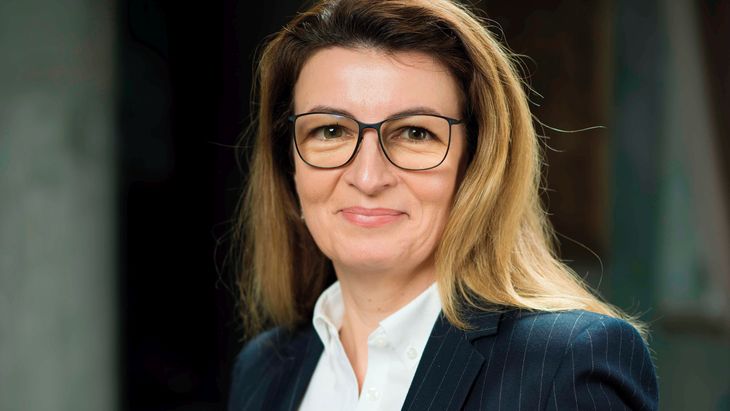Romania has a strong need for political and regulatory stability, together with a clear and stable permitting process, says Lăcrămioara Diaconu Pințea, Country Manager OX2 Romania. OX2’s Romanian subsidiary has secured a portfolio of about 600 MW, comprising onshore wind and energy storage technologies. The latest projects in progress are in Constanta and Galati region, and the most advanced of them, located in Galati with a 99 MW capacity, will be ready to build in the second half of the year and will become operational in 2025, says Lăcrămioara Diaconu Pințea, within an exclusive interview for Energynomics.
What are the main investments and plans regarding the region of CEE/SEE and also what are the plans for Romania? How much will you invest, and what projects are under development now? How about in the medium term?
OX2’s Romanian subsidiary was established in 2021 and, so far, has secured a portfolio of about 600 MW, comprising onshore wind and energy storage technologies.
Our projects in progress are in Constanta and Galati region, capitalizing on appropriate weather conditions and infrastructure. The most advanced of them, located in Galati with a 99 MW capacity, will be ready to build in the second half of the year and will become operational in 2025. The other projects will reach the ready-to-build stage next year.
Moving forward, OX2 has the ambition to be a local and long-term player, with an important role in the Romanian renewables market.
OX2 offers renewable energy solutions at scale. OX2 designs and builds in a sustainable and tailored way to meet our customers’ needs. OX2 has a proven business model and in-house expertise at every step of the process – from project acquisition and financing to engineering and design, permitting, procurement, construction, and technical and commercial management. As an industry pioneer OX2 has a strong track record and is today the leading provider of onshore wind in Europe. Globally, OX2 has the ambition to become the leading provider of renewable energy solutions, thereby powering the great shift from conventional to green energy.
OX2 is active in 11 markets and several technologies.
Why did OX2 choose Romania?
Geographical and technological expansion and diversification is the second pillar in OX2’s growth strategy. Geographically, OX2 is expanding into markets that need to diversify their energy mix and are characterized by predictability.
Romania is attractive, one of the most dynamic European markets as is set to significantly increase its renewables target to ensure 30.7% share of RES in the final gross energy consumption by 2030. To meet this goal, more than 7 GW of additional capacity, mostly wind, is set to be installed by 2030. In the medium term, Romania needs over 11 GW of RES to fully replace coal generated energy.
Listing the investment opportunities, I would mention: the European money available for Romania, the European assimilated Funds (PNRR, Modernization Fund, Just Transition Fund), Romania’s commitments to EU energy regulations and, of course, the local weather conditions.
We are also pleased to find skilled professionals here to support the implementation of our local projects.
What are main changes incurred after the Ukraine’s conflict? How did that affect costs, operations and projects’ speed? How about the Investment Return Rates?
The war had two effects at EU level which spread over Romania to a certain extent: it accelerated the deployment of projects already in pipeline and led to increased ambition by member states with an impact in the deployment pipeline for the coming years. The ability to finance such an accelerated deployment will vary from one country to another. The increased demand – together with disruptions in the supply chain – for key equipment has determined an increase in capex and longer delivery times. It is hard to comment on the returns as they reflect multiple variables, such as project capex & yield, energy prices, and inflationary environment, all affected by high volatility.
What are main barriers in the way of developing projects in Romania? What can be done?
Currently, Romania has a strong need for political and regulatory stability, together with a clear and stable permitting process. The investors’ confidence in Romania’s landscape is key to attracting healthy investments and we consider it essentially important that the private sector is consulted when it comes to updates on the objectives assumed by Romania within the National Integrated Plan for Energy and Climate Changes (PNIESC).
This applies also when new legislative initiatives are launched. For example, the recently adopted Bill no. 254/ 2022 which updates the Land Fund Bill no 18/1991 provides that energy projects can be developed on maximum 50 hectares of land purposed for agriculture. This poses problems to those green energy projects involving bigger lands because permitting must be obtained for multiple fragments of 50 hectares.
There are several hurdles currently slowing down new projects in renewable energy, such as the long permitting terms, the limited access to the national power grid and labor force shortages. On medium and long term, Romania needs to focus on adding expertise and specific skills to the labor force, since the renewable energy sector will grow to be one of the top players on the labor market.
Romania has a big opportunity now, and properly managed, it can give a boost to the overall economic environment. As mentioned already, clearer, and simpler procedures with a better and faster response rate could accelerate and increase the attraction of EU Funds, but also of other foreign investors.
_____________________________________________
This interview first appeared in the printed edition of Energynomics Magazine, issued in June 2023.
In order to receive the printed or electronic issue of Energynomics Magazine, we encourage you to write us at office [at] energynomics.ro to include you in our distribution list. All previous editions are available HERE.

